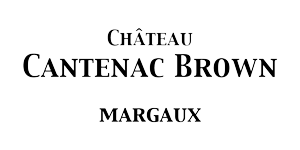To produce grapes, the vine goes through different stages of development. These stages will influence the yield and the quality of the harvest. We distinguish two main cycles in the life cycle of the grape:
- The vegetative cycle: It takes place from March to mid-November. It is the period when the vine will be active and will undergo the main phases of its development.
- The winter cycle: It takes place in mid-November and ends in March. It is the phase of rest of the vine.
Various works are carried out in the vineyard during these cycles. These stages will not have the same duration according to the soils and the grape varieties.
The different steps of the life cycle of the grape
The weeping
This is the first stage that the vine goes through after resting during its winter cycle. At the beginning of spring, as soon as March arrives, the vegetative cycle starts. The vine which was pruned during the winter presents then wounds of cut. With the warming of the soil at this time of the year, the sap present in the plant starts to circulate again. The sap will then start to flow at the level of the wounds of cut of the vine. It is this “crying” of sap that signals to the winegrower the resumption of the activity of the root system of the plant.
The budburst
It occurs between 20 and 35 days after the weeping. From the end of March to the beginning of April, buds appear on the vine along the shoots. Very quickly the buds swell and open to reveal a young shoot. Finally, they end up splitting. Indeed, after the healing of the cutting wounds. The circulation system of the vine is very agitated notably thanks to the increase of the temperatures which exceed the 10°, and to the effects of the humidity.
It is this phenomenon of splitting that we call “bud break”. The scales of the bud reject the “bud”, which is the fine shoot from which the future leaves will emerge. This is a very closely watched stage by the wine growers since the vine is then very sensitive to spring frosts.
Leafing
This period takes place during April. It is the moment when the leaves start to develop. Indeed, the buds are transformed into young shoots which are transformed in their turn little by little into leaves. The leaves unfold and take on their final appearance.
Flowering
Between the end of May and the beginning of June, after the appearance of the leaves, it is the turn of the flowering, which corresponds to the development of the clusters of flowers. From now on, the temperatures are higher and the sun is more present. These are the conditions that will allow the vine to bloom its flowers which will be later replaced by grapes. It is a very short stage since it lasts only ten days. The small white flowers that appear during this time are already in the form of clusters. Vine flowers have the particularity to bloom from the bottom. The quality of the flowering will inform the winegrower on the yield of his harvest. There is a rule that sets the date of harvest at 100 days after the flowering.
The fruit set
Still in June, the flowers fade and gradually give way to the future grapes. This stage is called “nouaison” because the grapes that appear are “tied” to the branch. At this stage, the grape is the size of a pepper seed, it is very firm and it is the moment when it is the most sensitive to diseases. If the flowering did not take place as expected, the bunches have unevenly sized berries. This is called millerandage.
Leaf removal
During the summer, leaf removal is an important moment in the work of the winegrower. This step consists in removing and cutting the leaves that could hide the grapes from the sun. The goal is to give them maximum sunlight to allow a better ripening and reduce the appearance of certain diseases. This leaf removal work can be done manually or mechanized.
The veraison
From mid-July, the growth phase of the vine slows down. The grapes, which were still green and hard, become colored berry by berry. Thus, the berries will go from translucent to golden for the white grape varieties and from green to pink then from blue/red to black for the red grape varieties. This step lasts 10 to 15 days. The grape, which takes its final color, also starts to fill with sugar even if it remains very acidic at this period.
The maturation
From August, the acidity of the grapes reaches its peak. Thus, it will decrease as the sugar accumulates. The skin of the grape also becomes less thick. Then enters the phase of maturation. This is the crucial stage that will determine the characteristics of the wine. The maturation phase lasts between 35 and 55 days, from August to October. That is to say the time for the berries to gorge themselves with sugar to the maximum. It is in particular the weather which will play on the maturation of the grape. The cooler the weather, the more acidic the grapes will be. On the other hand, the sun and the heat will give a much sweeter grape. When the quantities of sugar and acid are more or less complementary, the grape has reached maturity. The harvest period can then begin.
The dormancy
Last step of the life cycle of the grape : the dormancy. From mid-November, the leaves change color to red or yellow, then they start to fall. The sap goes down in the trunk and the roots. The vine enters then in phase of hibernation until March and its next vegetative cycle.


